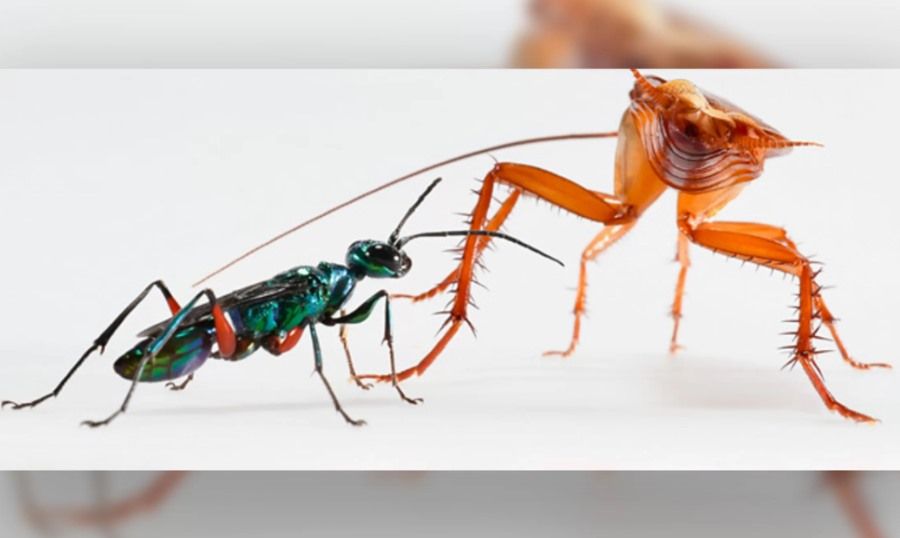Cockroaches fight like karate fighters to avoid zombie fate
The world of some insects can resemble a horror movie. Emerald ash borer, whose larvae feed on the living flesh of American cockroaches, is a perfect fit for horror movies. Scientists managed to record a spectacular defense of cockroaches, similar to a karate punch, thanks to which they can avoid the fate of zombies.
A female emerald ash borer wasp (Ampulex compressa) attacks an American cockroach (Periplaneta americana) by introducing into its m the venom that that causes the cockroach to lose control of its body. The wasp then lays an egg in the cockroach’s body and buries it alive. And although the cockroach m if they were to dig themselves out, the researchers did not even observe signs that the pr bował.
The larva hatched from the egg feeds on the cockroach’s guts leaving it alive all the time, making it something like a living incubator. The paralyzed cockroach becomes a living corpse, assumes the role of food for emerald ash borer wasp larvae.
Cockroaches were thought to be defenseless against attack in wasp. However, it turns out that they have a way b defense, which The cockroach can save it from a zombie-like fate, but it was difficult to observe without a special ultra-fast camera. Spectacular cockroach leg blows in, similar to the blow in karate, observed Ken Catania of Vanderbilt University. The description of this behaviour was published in the journal „Brain, Behavior and Evolution”.
Catania studies interactions between predators and prey. It has recorded an impressive collection of in which The cockroach’s defense was recorded in providing the first detail a new look at how cockroaches fight.
First, the cockroach must be vigilant to avoid becoming a living incubator. In 28 of the 55 attacks in which Catania recorded in an enclosed lab space, the cockroaches didn’t perceive the threat fast enough. Wasps took an average of 11 seconds to paralyze a cockroach.
Wasp needs two ch stings to turn a cockroach into live food. The first is designed to paralyze the front odn and the opponent. Of course, with the help of the venom. The wasp then turns over the insect and through the throat reaches the m of the cockroach’s thorax, in which hich delivers a neurotoxin and takes control of the nervous system. And it’s basically a done deal. The cockroach begins to clean itself, which is likely a side effect of the venom. The second sting takes the initiative away from the cockroach. It only moves if the wasp pulls it by the feelers in the right direction.
But the recordings also show how the way cockroaches defend themselves. If the insect is alert enough and spots the wasp earlier, it delivers a powerful blow to the wasp’s head with its hind leg I’m. Just like in the movies showing the champion in martial arts. A spectacular blow to the aggressor’s head resulted in 63 percent of. case in an attack in a wasp on an adult individual . In the case of juveniles, the in almost every wasp attack was successful.

– The cockroach has a set of behaviors that re it can apply to fend off an attack by emerald ash borer wasps and protect itself from the parasite that turns them into zombies. It starts with what I call a position "en garde", as in fencing – explained Catania. – This allows the cockroach to move its feelers toward the wasp, so it can track an impending attack and take good aim at the wasp’s head. It is one of the most efficient means in deterrence. A wasp after a blow to the head usually seeks a less valiant target – added.
An attacking wasp needs victims, which rych nervous system still works well enough to move. Otherwise, the wasp would never be able to bring the entire cockroach to a safe place where it can bury it to become a zar both home and food for its young. The emerald wasp has evolved an attack that that subjugates cockroaches with just two precise stings.
Source Source: Vanderbilt University, Science News, photo. Catania Lab, Vanderbilt University
